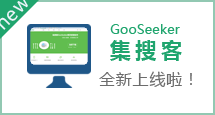Theme list
On the Theme List work board, there are the following methods to list themes:
- Via a right-button pop-up menu item List, all themes on the MetaCamp server can be listed and paginated.
- After having input theme's name to be queried into the edit box on the right side below the theme list and hit RETURN, all themes matching the query condition can be listed and paginated. Wild card character "*" can be involved. For example, "Com", "*Com*", "*" are all permitted.
The column Host of the theme list reveals more information so that it can be determined if the Data and Clue Extraction Instruction Files for one of the data schemas belonging to this theme are stored on the currently connected DataStore server. If they do, an image  and character Y are presented. If they don't, an image
and character Y are presented. If they don't, an image  and character N are presented. If not sure, an image
and character N are presented. If not sure, an image  and character U are presented.
and character U are presented.
Note: Different from Schema List, originally image  and character U are presented. Only after the row has been selected, the status about it is retrieved from the server and is presented accordingly.
and character U are presented. Only after the row has been selected, the status about it is retrieved from the server and is presented accordingly.
Besides List there are two more right-button pop-up menu items shown as follows:
- Info: If clicked, detailed information on the selected theme will be presented in a pop up window, for example, information on every data schemas, the owner, the DataStore server hosting the instruction files, contributor to modify the instruction files, modification date etc, which are described further in MetaStudio Senior User's Handbook#Theme List.
- recognize: When crawling the Web and extracting data, DataScraper extracts new clues according to SCE files. If a new theme name is assigned to a new extracted clue by the SCE file, DataScraper will insert a new record into table SpiderClue. At the same time a new theme record is inserted into MetaCamp's database, the status field of the record is torecognize, which means the new theme has no data schemas defined. If the List menu item is clicked, MetaStudio will select and load one page as a sample page. Thereafter the operator can define data schemas for this theme. After all, described in the previous chapter, have been done, the status of this theme is changed to ready. In summary, this menu item is an convenient way to define more data schemas for new themes.
